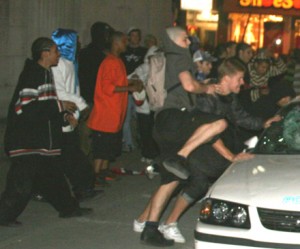One thing about learning to appreciate art more personally is to see the unique and new ways old ideas are being used. The artist Phil Hansen we learned about at the beginning of our course is a perfect example of this – his idea of art goes outside the normal boundaries. He has taken ideas and given new life to them by using new mediums or methods to acheive fantastic expressions of himself. For today’s class, your task is to seek out examples of artists expressing themselves in completely original and inspiring ways!
There are certain guidelines and expectations with this assignment, which will be detailed for you. This is to ensure your online searching does not become an aimless use of your class time. However, the true purpose of this time and research is for you individually to find inspiration and interest in art-related examples.
To do this, and for it to be personally relevant and valuable, you cannot talk with anyone or share with them what you find. You can keep a URL list of interesting things to share at a later time with your peers, but for this task today it has to be done on your own, independent of any influence or participation from others.
Task:
- Find ten truely unique / impressive / original examples of an artist or type of art that could defy what most people would consider to be art. They may use a new medium, use a common one in new ways, or be expressing it in a way that has never been done before. Keep the url link to each of these ten, or copy and paste the actual images onto a word document. From those ten, then, the challenge here is to find the “most unique” that will draw some surprising response from your peers when shared with them later.
- For your searching, you may look at Google images or do a search on Google web for new art ideas. This assignment, though, will not include any youtube examples of new demonstrations of art. This assignment should, also, only include Visual Art examples.
- With your chosen example, you have to give some background information:
- First impression
- Reason this example was chosen above the rest. (Detailed explanation)
- Originality explained or described in detail. This could be a descriptive explanation of the method they use to create their art or steps used in creating it.
- Explanation of how / why / ways this example of art defys normal definitions of what is considered “art”.
- Inspiration – how does this example inspire you? Are you inspired to try it, experiment with old mediums in a new way, look at an expression of art differently. (This explanation of the inspiration should be persuasive and convincing, possibly proving your example to be the most unique above any other example.)
- Your choice and responses will be evaluated by how thorough and clear you are in expressing your choice. Make a simple choice and show little effort or interest in answering the above questions, your mark will be poor, but make a good choice, take your time to find the right example of art and explain your reasons, and your mark will be much higher!

